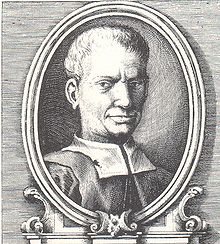Satirist avenged bad treatment though his poetry
 |
| The poet and satirist Giuseppe Parini was identified with the Age of Enlightenment |
A writer associated with the Age of Enlightenment in Europe, he is remembered for his series of Horatian odes and for Il giorno - The Day - a satirical poem in four books about the selfishness and superficiality of the aristocracy in Milan.
The son of a silk trader, Parini was sent to Milan to study under the religious order, the Barnabites. In 1752 his first volume of verse introduced him to literary circles and the following year he joined the Milanese Accademia dei Trasformati - Academy of the Transformed - which was located at the Palazzo Imbonati in the Porta Nuova district.
He was ordained a priest in 1754 - a condition of a legacy made to him by a great aunt - and entered the household of Duke Gabrio Serbelloni at Tremezzo on Lake Como to be tutor to his eldest son.
Parini was unhappy there and felt he was badly treated, but he twice got his revenge on his employer through his writing. In 1757 he wrote his Dialogo sopra la nobilità, a discussion between the corpse of a nobleman and the corpse of a poet about the true nature of nobility. Later, in his masterpiece, the satirical poem, Il Giorno, he sent another powerful message.
The poem, which contained ironic instructions to a young nobleman about the best ways to spend his days, also marked an advance in Italian blank verse and established his literary reputation.
 |
| Mozart composed an operatic score for one of Parini's plays, Asconio in Alba |
He met the young Wolfgang Amadeus Mozart in Milan, who composed an operatic score for Parini’s play, Ascanio in Alba. The opera was performed in 1771.
Parini held a Government post as a magistrate after the French took Milan in 1796 but then retired to continue writing.
Younger poets admired Parini for his morality and free thinking, in particular, Ugo Foscolo, who portrayed Parini as serious and dignified and criticised the rich town that he felt had forgotten him, in two of his poems.
Parini died in 1799 in Milan. His body was interred at the Mojazza Cemetery, not far from the Porta Garibaldi railway station.
 |
| Bosisio Parini sits on the shore of Lake Pusiano in the Brianza, north of Milan |
Bosisio in the province of Lecco in Lombardy, where Parini was born, is now called Bosisio Parini in honour of the poet. A village of about 3,500 inhabitants, it is situated about 11 km (7 miles) southwest of Lecco on the shores of the Lake of Pusiano. The lakefront is named after the sports journalist Gianni Brera, who died in 1992. Bosisio Parini is part of the area between Monza and Lake Como known as the Brianza, an area of outstanding natural beauty popular with Milan residents as a holiday or weekend destination.
| The monument the poet Giuseppe Parini in Piazza Cordusio in the heart of Milan's city centre |
In Piazza Cordusio in Milan there is a monument to Parini by the architect Luca Beltrami. The piazza takes its name from the Cors Ducis (Ducal court) which was found in the square during Longobard times. Sometimes known as Piazzale Cordusio, it is well known for its turn-of-the-19th-century Neoclassical and Art Nouveau buildings, banks and post offices, such as the Palazzo delle Assicurazioni Generali, the Palazzo del Credito Italiano and the Palazzo delle Poste, as well as the former Borsa di Milano (former Milan Stock Exchange). The square hosts the Cordusio metro station and is the starting point of the elegant pedestrian Via Dante which leads to the imposing medieval Castello Sforzesco.
More reading:
Why Gaspara Stampa was the greatest female poet of the Renaissance
Carlo Goldoni, the Venetian playwright whose work still entrances audiences today
Giuseppe Gioachino Belli, the writer who satirised life in 19th century Rome
Also on this day:
1498: The execution of hellfire preacher Girolamo Savonarola
1670: The death of Ferdinando II de' Medici, Grand Duke of Tuscany
1933: The birth of Sergio Gonella, the first Italian to referee a World Cup final
Home









